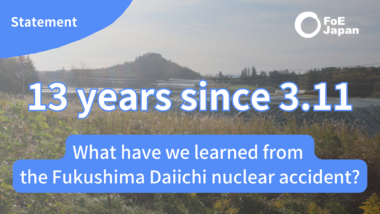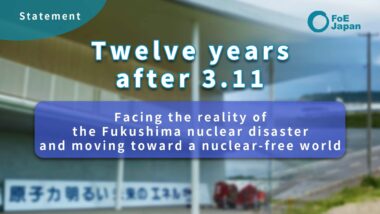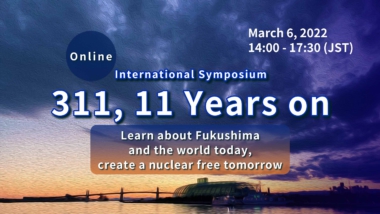Nuclear Waste
Spent nuclear fuels generated by nuclear power plants are to be “reprocessed” according to Japanese energy policy. The spent fuels are being transported to a reprocessing plant in Rokkasho Village, Aomori Prefecture. Spent fuels are cut up, dissolved in nitric acid, and separate the plutonium and uranium. This process generates highly radioactive liquid waste. The radioactive liquid waste is mixed with glass materials to form a vitrified product, which emits strong radiation, and the surface temperature of the vitrified product immediately after production exceeds 200 degrees Celsius. Therefore, it is supposed to be cooled in a special storage facility for 30 to 50 years, and then taken out for disposal in a geological formation deeper than 300 meters.
Even the candidate of the final disposal site has not decided yet. The construction of the Rokkasho Reprocessing Plant started in 1993 and was supposed to be completed in 1997, but the completion has been postponed 25 times (as of August 2021), and a number of accidents and troubles occurred during the commissioning (active testing) of the plant from FY 2006 to FY 2008. One of the accidents involved the leakage of 149 liters of high-level liquid waste. The nuclear power plant continues to operate and produce dangerous radioactive waste without any solutions.



